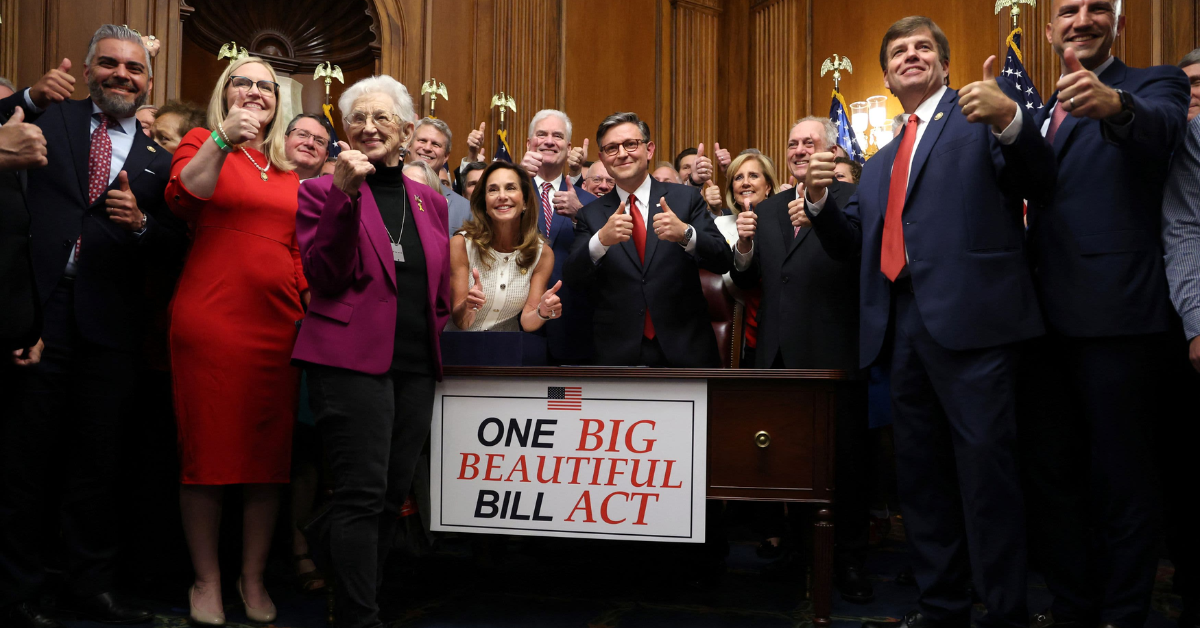Former President Donald Trump is once again making headlines by proposing a sweeping legislative initiative dubbed the “One Big Beautiful Bill Act,” which he suggests could lead to major overhauls in various aspects of federal policy, including taxes on Social Security benefits. While the proposal is still largely conceptual, Trump has hinted at its core intent: simplifying tax policy and potentially eliminating federal income taxes on Social Security benefits for retirees.
As campaign season heats up, many are wondering what tangible effects this act, if passed, might have on the nation’s tax system—particularly for the over 66 million Americans collecting Social Security. This article breaks down what we know so far, what it could mean for retirees, and how it fits into existing Social Security taxation policies.
Current Taxation of Social Security Benefits
Under current IRS rules, Social Security benefits can be subject to federal income taxes depending on the recipient’s total combined income. According to the Social Security Administration (SSA), combined income includes adjusted gross income, non-taxable interest, and half of a person’s Social Security benefits.
– Individuals with a combined income between $25,000 and $34,000 may pay income tax on up to 50% of their benefits.
– Individuals with a combined income over $34,000 may pay tax on up to 85% of their benefits.
For married couples filing jointly:
– Couples with a combined income between $32,000 and $44,000 may pay tax on up to 50% of their benefits.
– Couples earning more than $44,000 may pay tax on up to 85%.
What Trump Is Proposing
In various recent interviews and campaign statements, Trump has floated the idea of eliminating income taxes on Social Security benefits as part of his broader “One Big Beautiful Bill Act.” While no formal legislation has yet been introduced, he has indicated that part of the bill would aim to reduce or completely remove the tax burden on benefits received by retirees.
In a statement, Trump said, “Retirees have worked hard all their lives. They deserve to keep every penny they were promised—not watch their benefits chipped away by taxes.” He added that the bill would be “a single, comprehensive act to fix the mess in Washington,” aimed at consolidating various reforms into one legislative package.
The Historical Context
Social Security benefits were not taxed at all until 1983, when Congress passed a reform to tax up to 50% of benefits for higher-income recipients. In 1993, a second tier was added, raising the maximum taxable amount to 85%. These thresholds, however, have not been adjusted for inflation in over three decades.
As a result, a growing number of beneficiaries have found themselves paying taxes on their benefits, even if their purchasing power hasn’t significantly increased. According to the Congressional Research Service, more than half of all Social Security recipients had to pay taxes on their benefits in recent years.
What Full Deduction Could Mean
If Social Security benefits were no longer taxed at the federal level, this could result in significant tax savings for older Americans, particularly middle-income retirees.
According to an analysis by the Senior Citizens League, ending taxation on benefits could save the average retired couple around $1,500 per year in federal taxes. However, federal revenue would decrease by an estimated $411 billion over 10 years, according to the Committee for a Responsible Federal Budget.
This financial impact raises questions about how the government would pay for the loss in revenue. Social Security itself is already facing solvency challenges. The latest Trustees Report projects that the program’s trust fund reserves will be depleted by 2035, at which point incoming payroll taxes would only be sufficient to pay about 80% of scheduled benefits.
Political Realities and Legislative Hurdles
While Trump’s proposal could attract support from retirees and advocacy groups pushing for tax relief, it faces significant legislative and fiscal challenges.
To become law, any version of the “One Big Beautiful Bill Act” would need to be passed by both the House and Senate and signed by the president. Achieving bipartisan support for a bill with such a large fiscal implication might be difficult.
Additionally, the Social Security program itself is funded largely by payroll taxes, not general revenue—meaning that removing tax revenue on benefits would not directly worsen its solvency, but it would contribute to the broader federal deficit. The increased deficit could make it harder to fund other parts of the government or necessitate spending cuts or tax increases elsewhere.
Reaction from Key Stakeholders
Advocacy groups are watching the proposal closely. AARP has long advocated for the elimination or adjustment of taxation on Social Security benefits, particularly calling for inflation-adjusted income thresholds. However, AARP also emphasizes the need for a balanced approach that doesn’t worsen the program’s long-term solvency.
Economists, meanwhile, are split. Some applaud the move as a targeted tax break for an aging population, but others warn it could tilt fiscal policy further out of balance.
What Comes Next
For now, the “One Big Beautiful Bill Act” remains a campaign talking point without specific legislative text. However, given Trump’s enduring influence among Republican lawmakers and voters, such a proposal could gain traction if he returns to office or Republicans regain control of Congress.
Retirees, financial planners, and taxpayers should stay informed as details emerge. Future changes to the taxation of Social Security could influence retirement planning, income strategies, and government funding priorities for years to come.
In the meantime, beneficiaries can check their current tax liability on Social Security benefits using the IRS’s or consult with a tax professional.
As 2024 unfolds, Trump’s proposed bill—however grandly named—could shape the financial reality for millions of American seniors. Whether it becomes law or remains political rhetoric remains to be seen.

